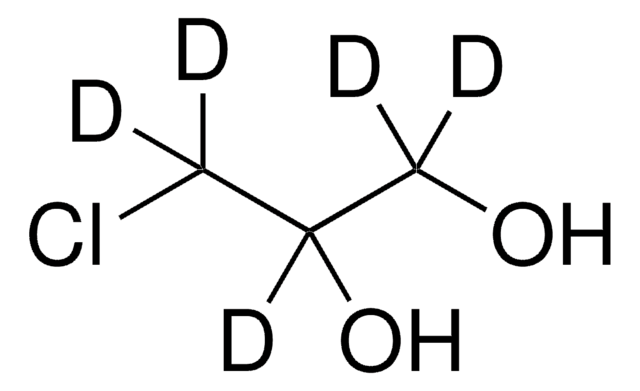1.04717
Isooctane
for liquid chromatography LiChrosolv®
Synonim(y):
2,2,4-Trimethylpentane, 2,2,4-Trimethylpentane, Isobutyltrimethylmethane, iso-Octane, Isooctane
About This Item
Polecane produkty
gęstość pary
3.9 (vs air)
Poziom jakości
ciśnienie pary
41 mmHg ( 21 °C)
linia produktu
LiChrosolv®
klasa czystości
isocratic
Próba
≥99% (GC)
Postać
liquid
temp. samozapłonu
745 °F
siła działania
>2500 mg/kg LD50, oral (Rat)
granice wybuchowości
6 %
metody
HPLC: suitable
zanieczyszczenia
≤0.0002 meq/g Acidity
≤0.0002 meq/g Alkalinity
≤0.01% Water
pozostałość po odparowaniu
≤2.0 mg/L
przepuszczalność
210 nm, ≥50%
220 nm, ≥80%
245 nm, ≥98%
współczynnik refrakcji
n20/D 1.391 (lit.)
pH
7
tw
98-99 °C (lit.)
mp
−107 °C (lit.)
temp. przejścia
flash point -12 °C
gęstość
0.692 g/mL at 25 °C (lit.)
temp. przechowywania
2-30°C
ciąg SMILES
CC(C)CC(C)(C)C
InChI
1S/C8H18/c1-7(2)6-8(3,4)5/h7H,6H2,1-5H3
Klucz InChI
NHTMVDHEPJAVLT-UHFFFAOYSA-N
Szukasz podobnych produktów? Odwiedź Przewodnik dotyczący porównywania produktów
Opis ogólny
Zastosowanie
- Spectral Investigations of Fluorescence Tracers in Automotive and Aviation Fuels under Cryogenic Conditions: This research highlights the use of isooctane in studying the behavior of fuels at low temperatures, proving essential for improving fuel performance and safety in automotive and aviation industries (Koegl et al., 2024).
- Versatile Application of TiO2@PDA Modified Filter Paper for Oily Wastewater Treatment: Demonstrates isooctane′s role in assessing the efficiency of innovative materials designed for environmental applications, specifically in the treatment of oily wastewaters, enhancing sustainability in industrial practices (Zhao et al., 2023).
- Characterization and Pilot-Scale Application of the ZMS-2 Serine Protease with Novel Properties for the Eco-friendly Leather Processing: Utilizes isooctane in extracting and characterizing enzymes that significantly reduce the environmental impact of leather processing, marking a step forward in sustainable industrial manufacturing (Khan et al., 2023).
- Rapid Construction of Caffeic Acid/p-Phenylenediamine Antifouling Hydrophilic Coating on a PVDF Membrane for Emulsion Separation: Investigates the role of isooctane in creating advanced coating solutions that improve the efficiency and longevity of separation processes, critical for environmental engineering (Tong et al., 2023).
Charakterystyka techniczna
Uwaga dotycząca przygotowania
Komentarz do analizy
Identity (IR): conforms
Evaporation residue: ≤ 2.0 mg/l
Water: ≤ 0.01 %
Acidity: ≤ 0.0002 meq/g
Alkalinity: ≤ 0.0002 meq/g
Transmission (at 210 nm): ≥ 50 %
Transmission (at 220 nm): ≥ 80 %
Transmission (from 245 nm): ≥ 98 %
Filtered by 0.2 µm filter
Inne uwagi
Informacje prawne
Hasło ostrzegawcze
Danger
Zwroty wskazujące rodzaj zagrożenia
Zwroty wskazujące środki ostrożności
Klasyfikacja zagrożeń
Aquatic Acute 1 - Aquatic Chronic 1 - Asp. Tox. 1 - Flam. Liq. 2 - Skin Irrit. 2 - STOT SE 3
Organy docelowe
Central nervous system
Kod klasy składowania
3 - Flammable liquids
Klasa zagrożenia wodnego (WGK)
WGK 2
Temperatura zapłonu (°F)
10.4 °F - closed cup
Temperatura zapłonu (°C)
-12 °C - closed cup
Certyfikaty analizy (CoA)
Poszukaj Certyfikaty analizy (CoA), wpisując numer partii/serii produktów. Numery serii i partii można znaleźć na etykiecie produktu po słowach „seria” lub „partia”.
Masz już ten produkt?
Dokumenty związane z niedawno zakupionymi produktami zostały zamieszczone w Bibliotece dokumentów.
Klienci oglądali również te produkty
Nasz zespół naukowców ma doświadczenie we wszystkich obszarach badań, w tym w naukach przyrodniczych, materiałoznawstwie, syntezie chemicznej, chromatografii, analityce i wielu innych dziedzinach.
Skontaktuj się z zespołem ds. pomocy technicznej









